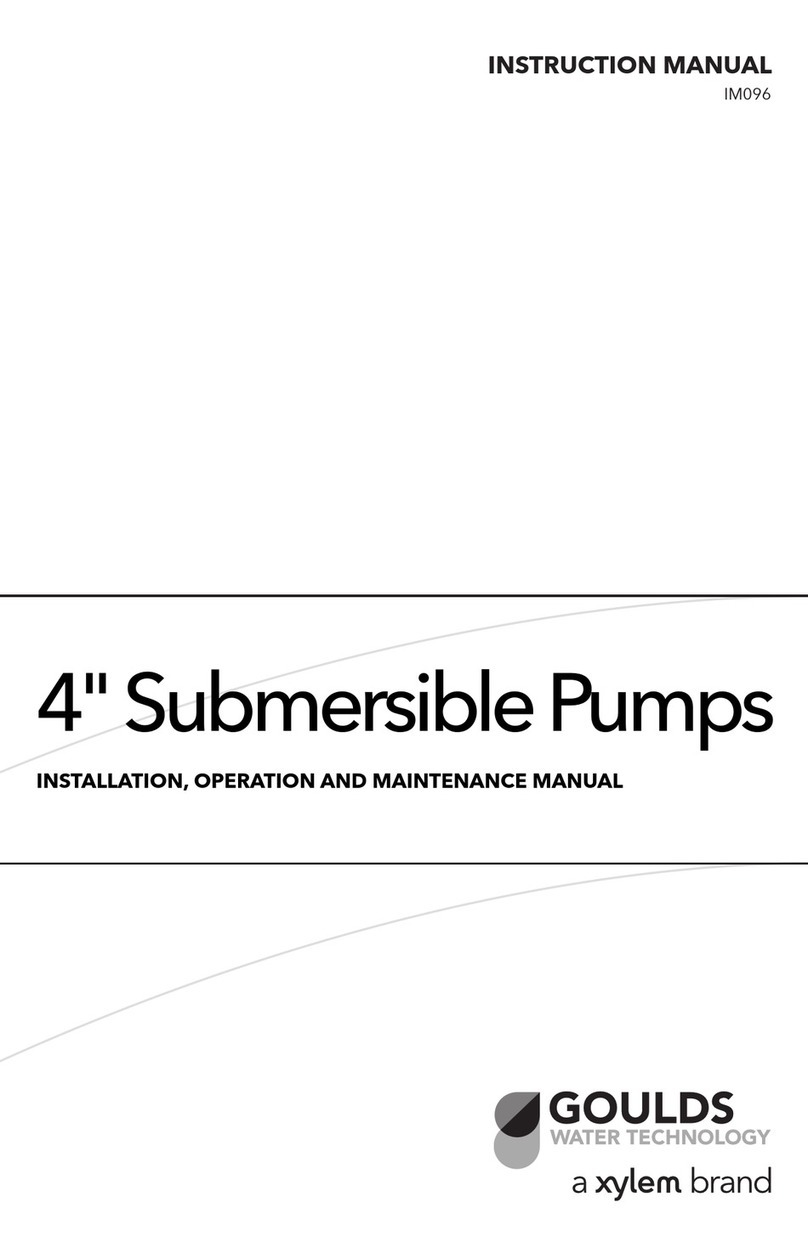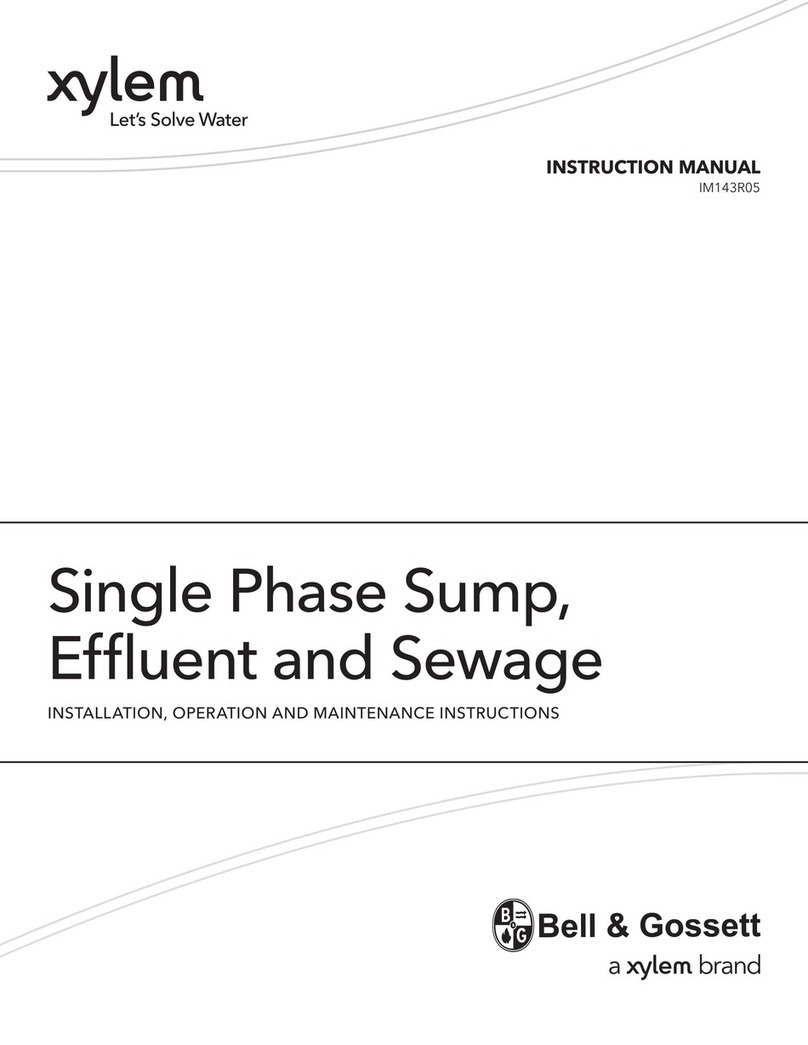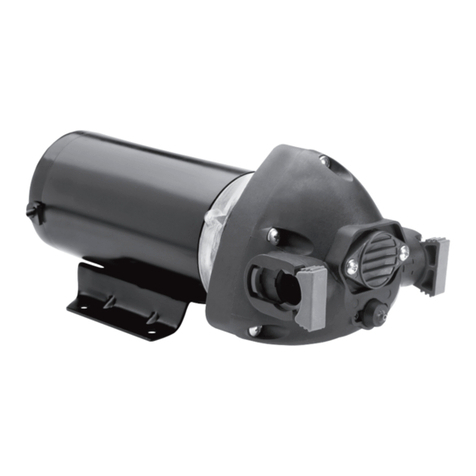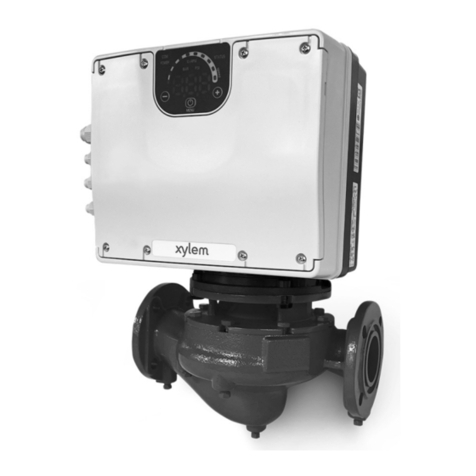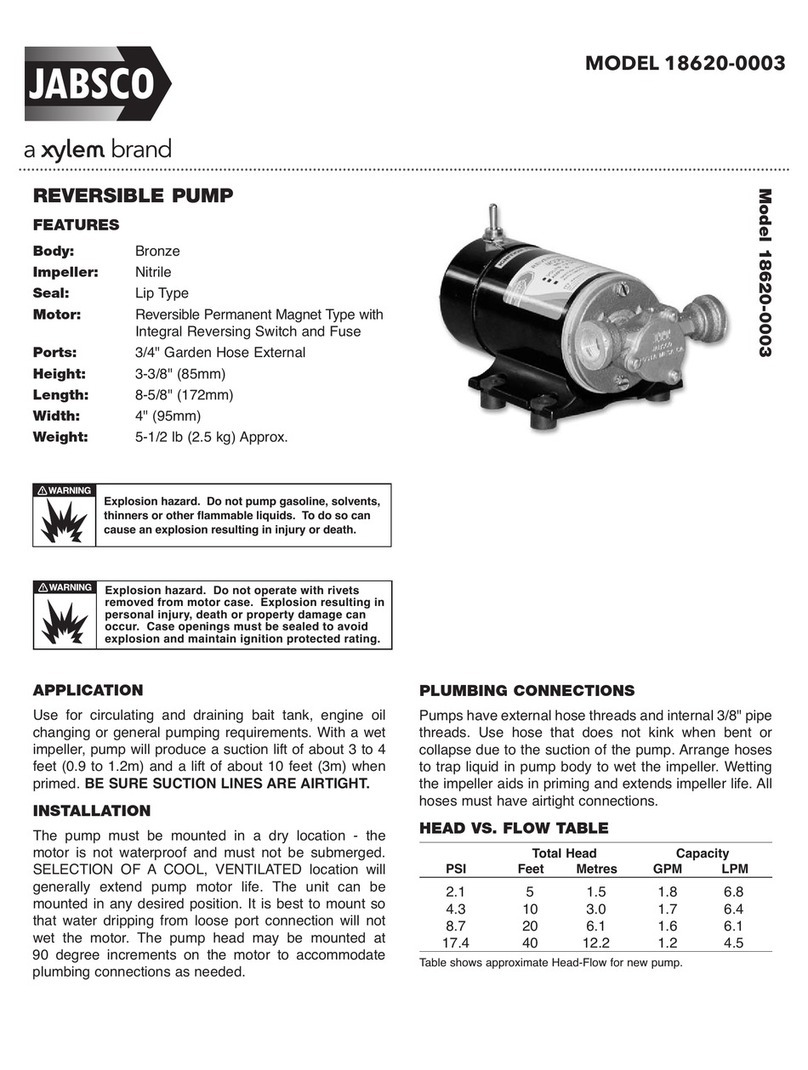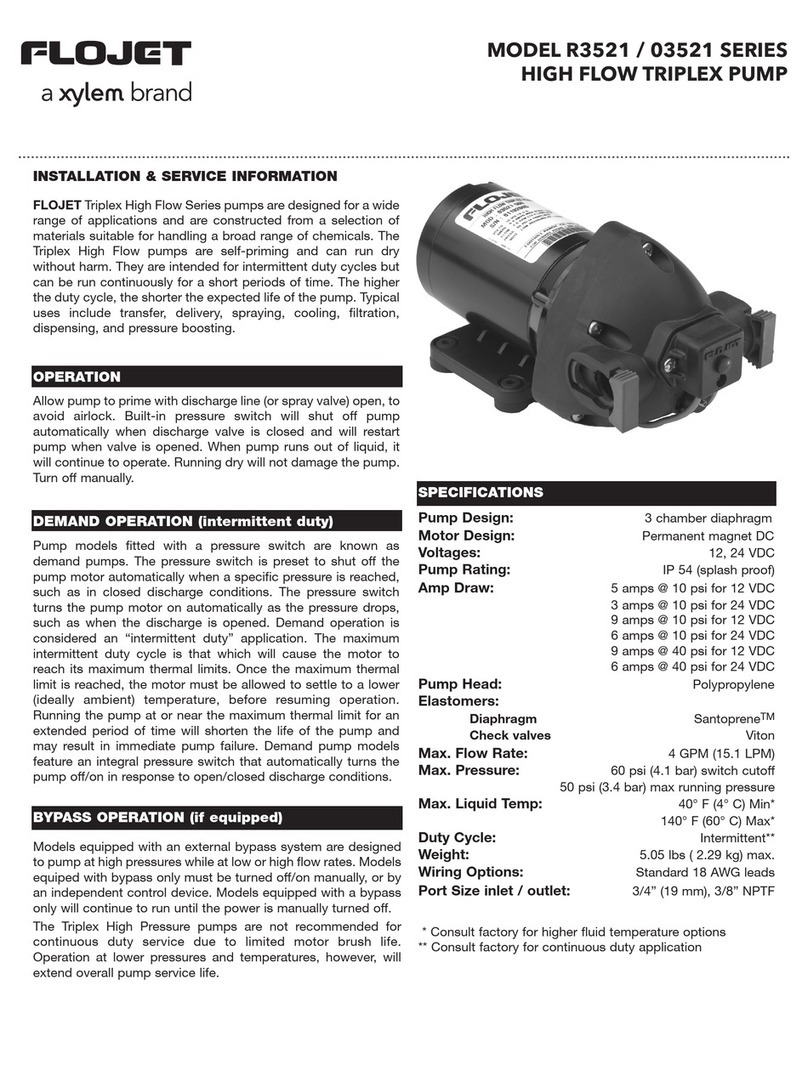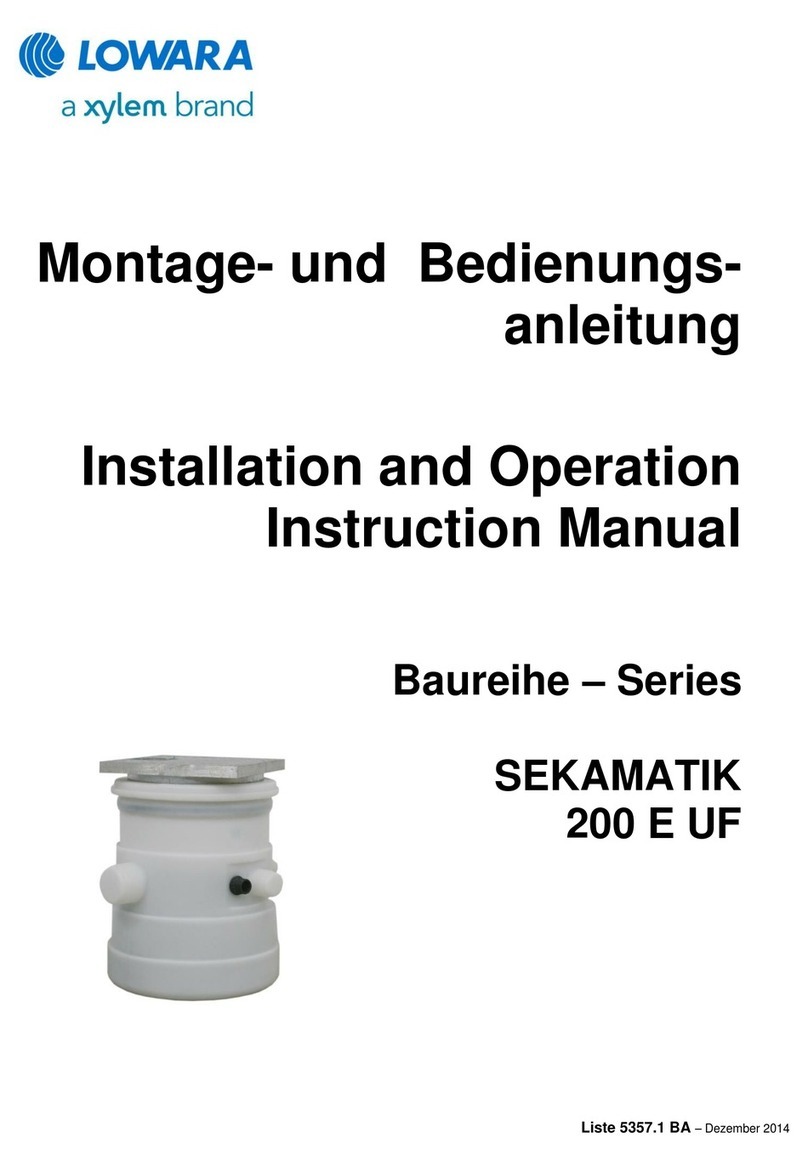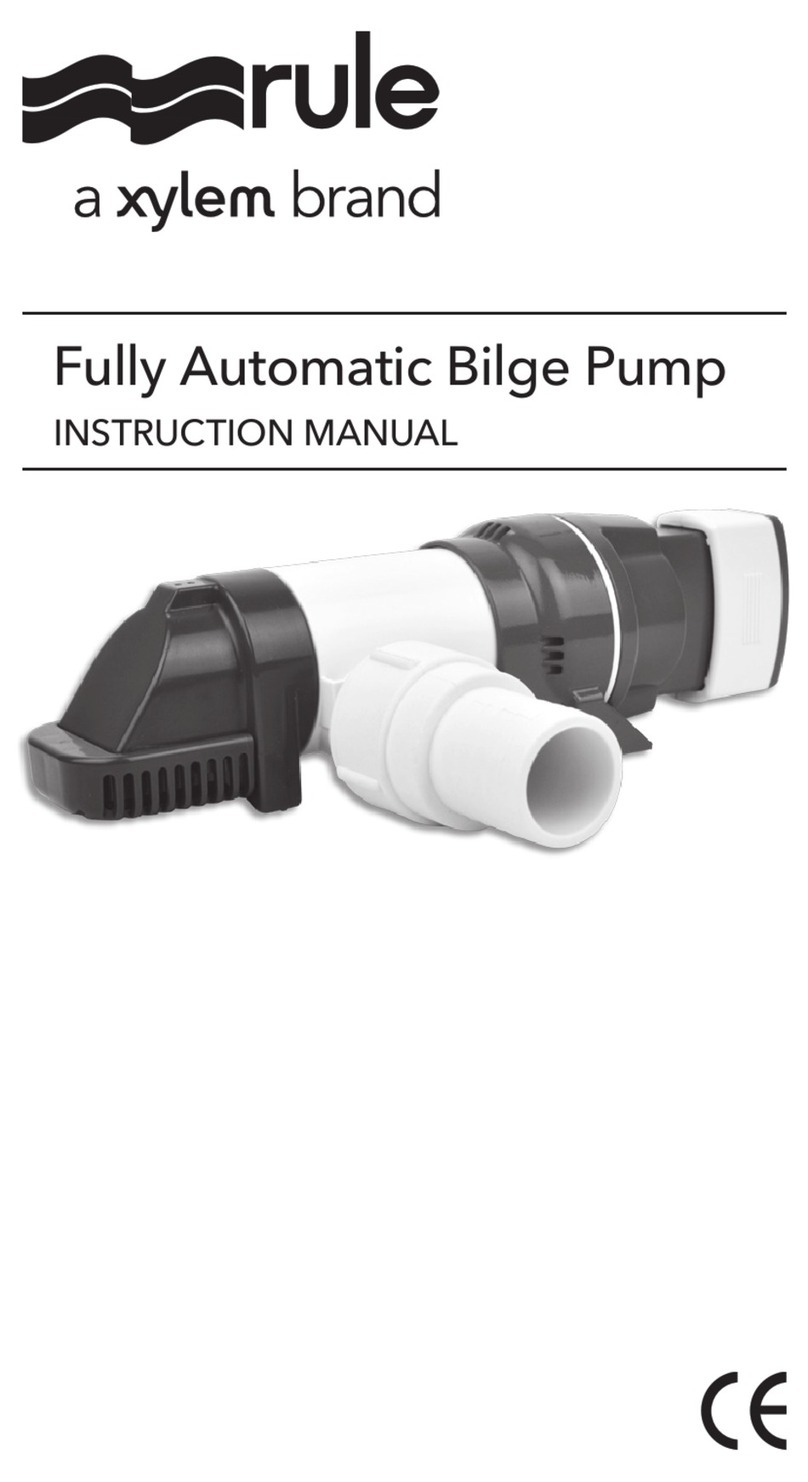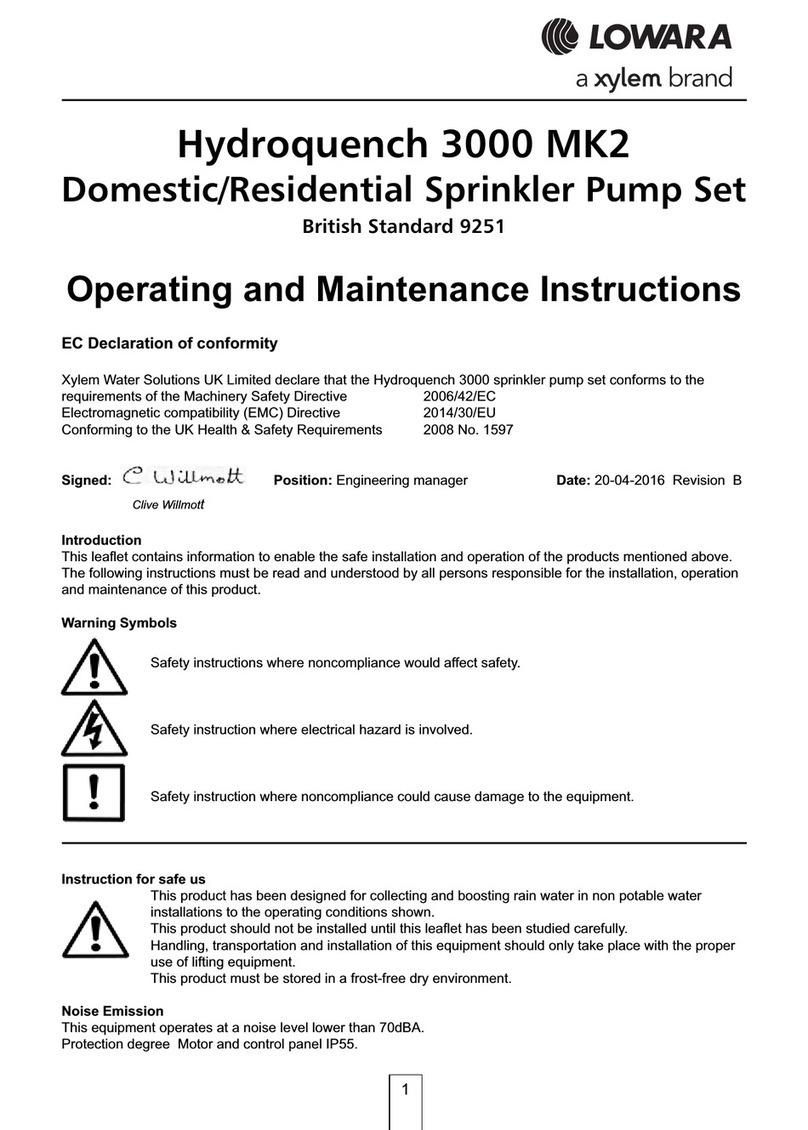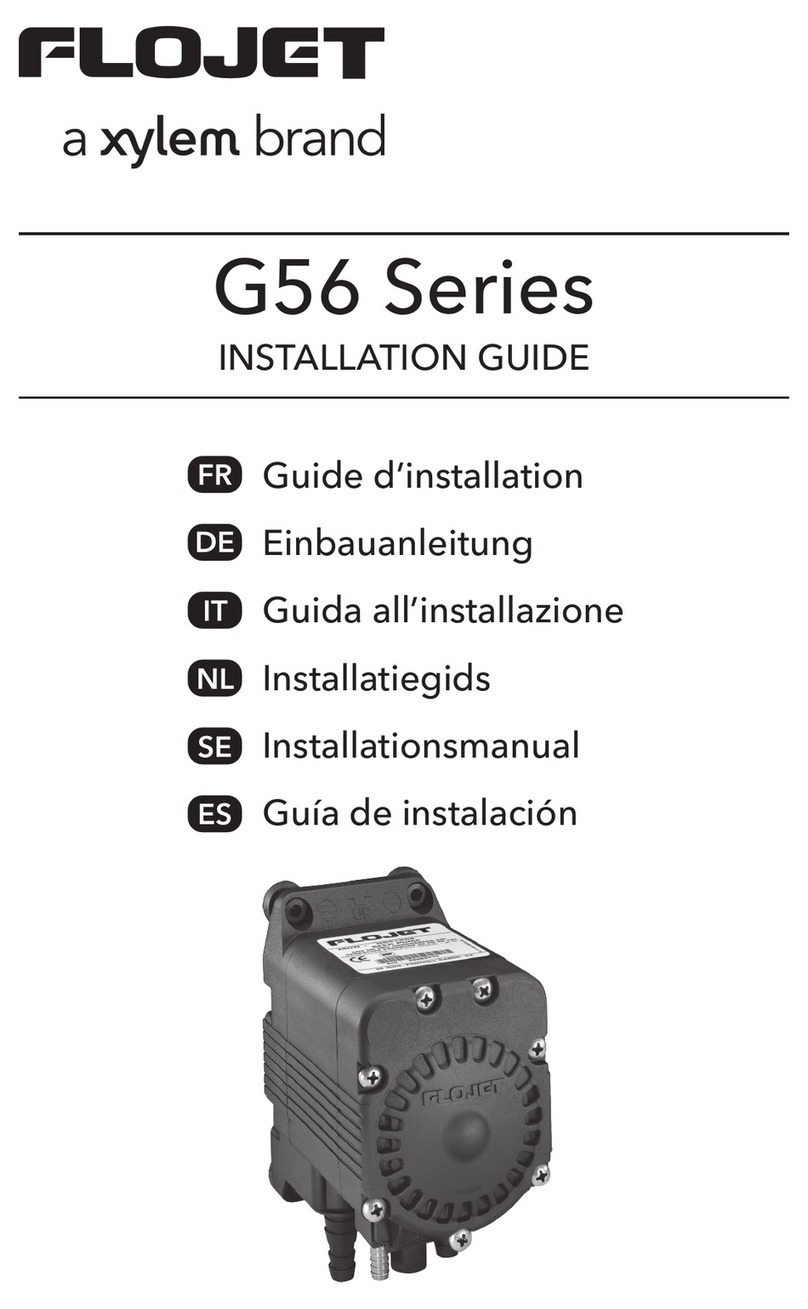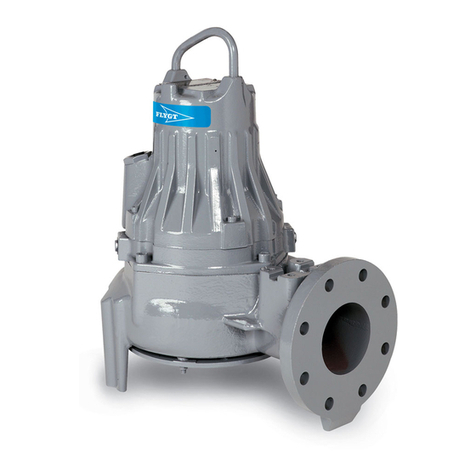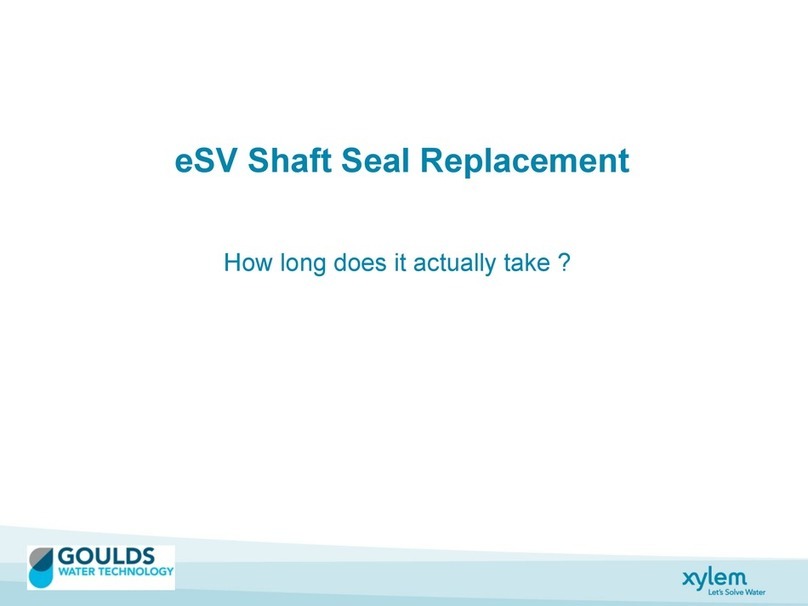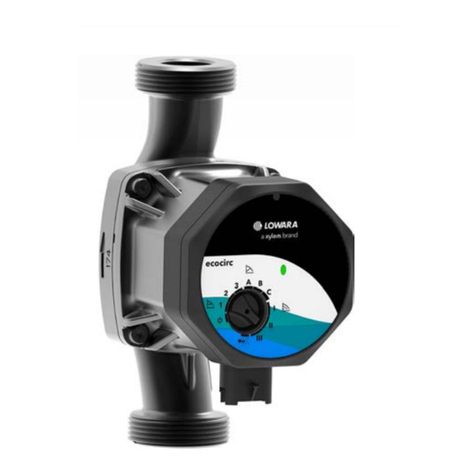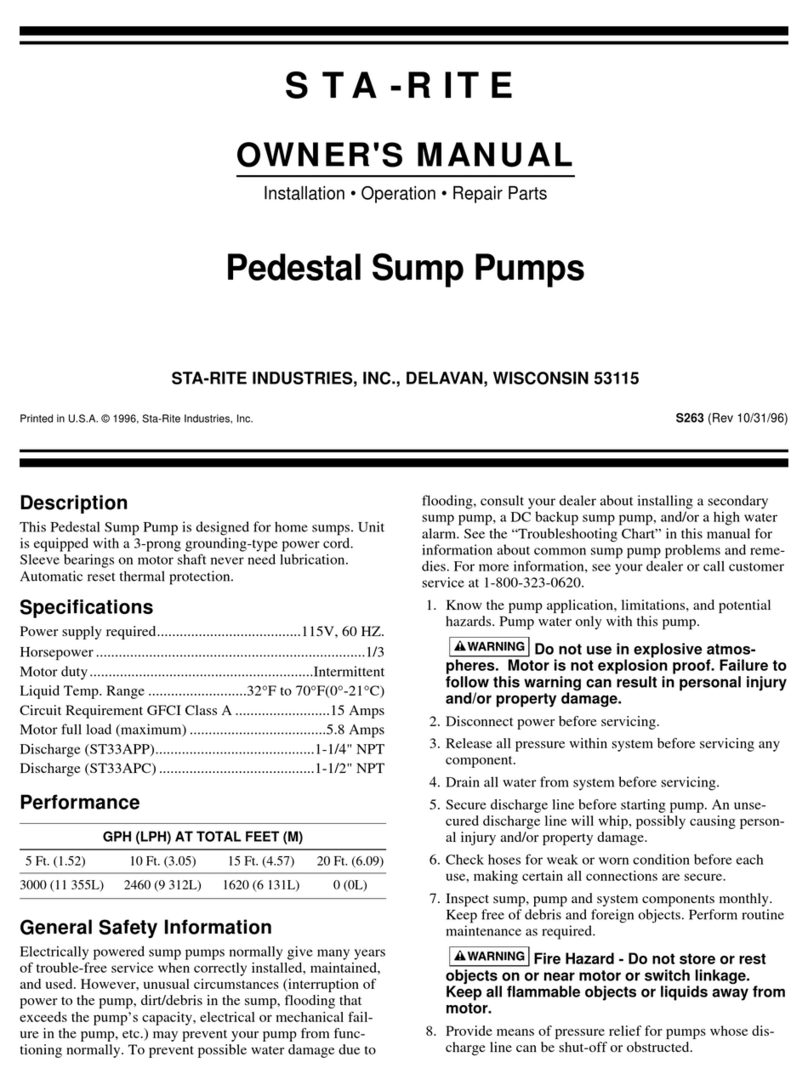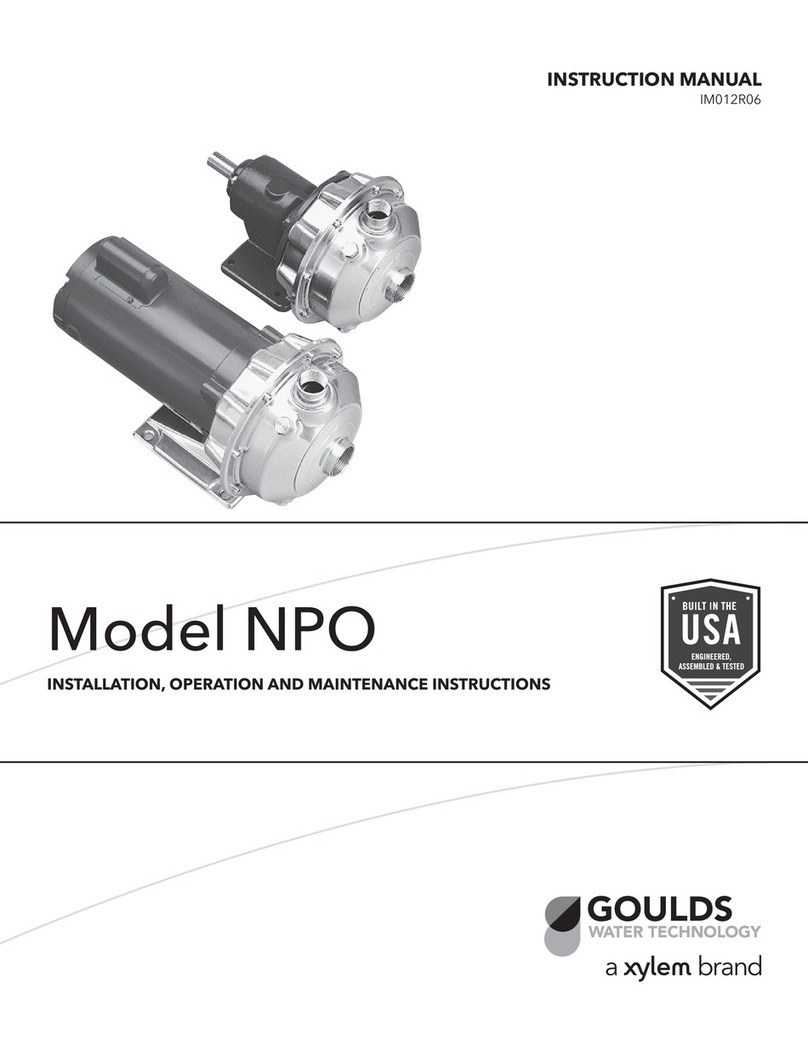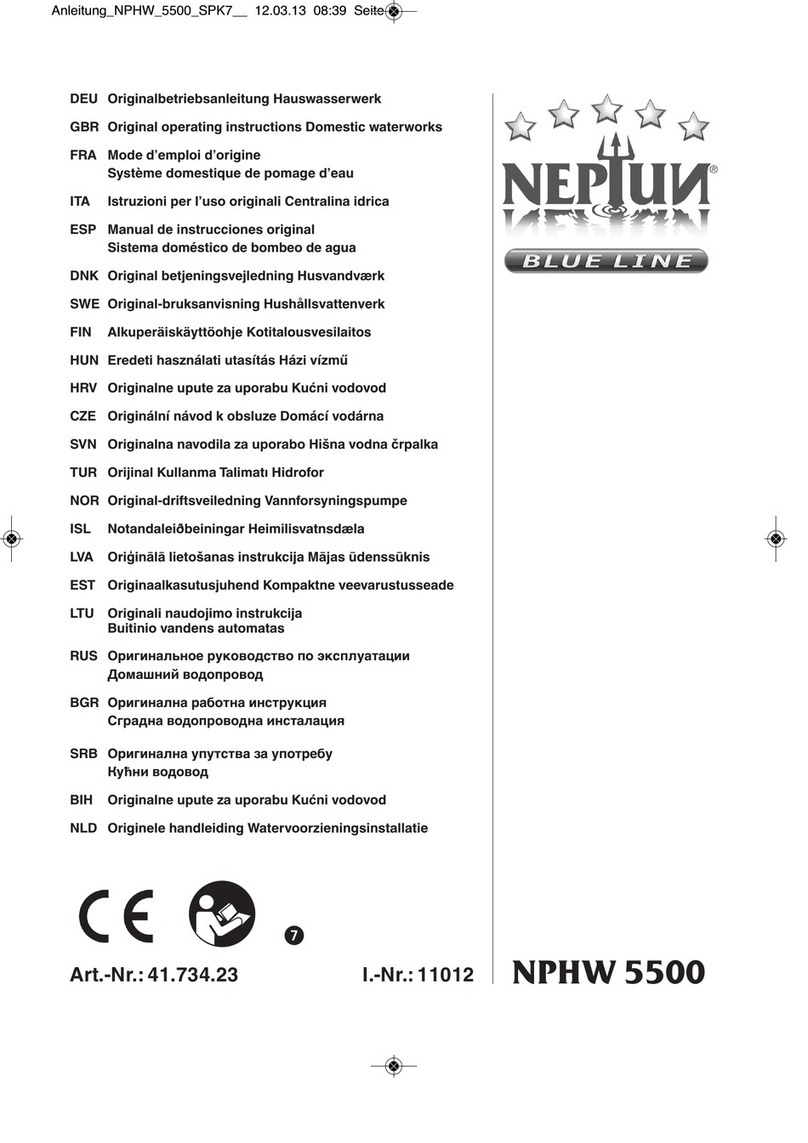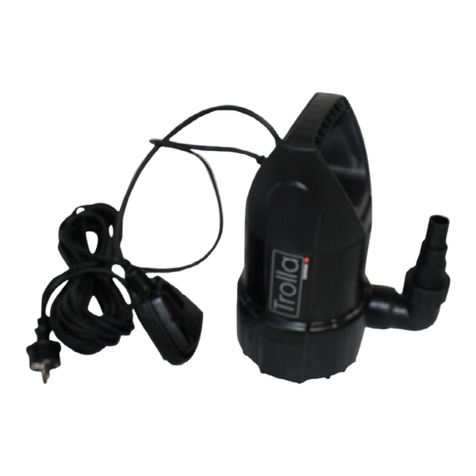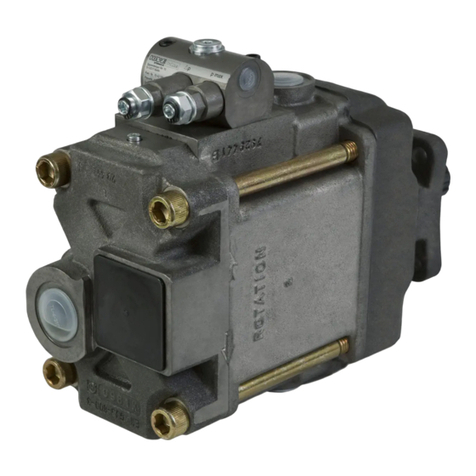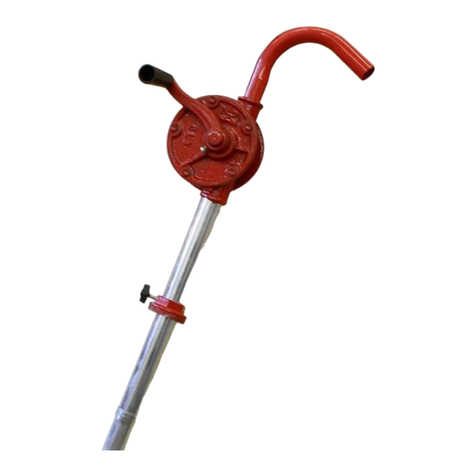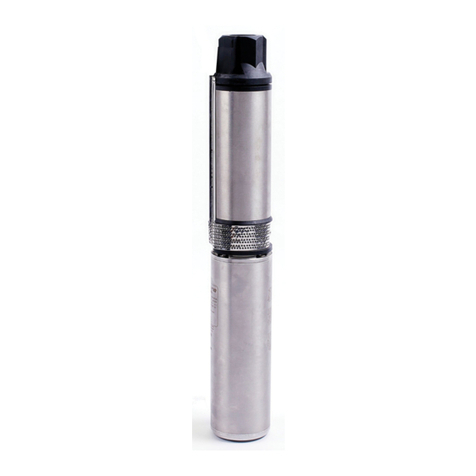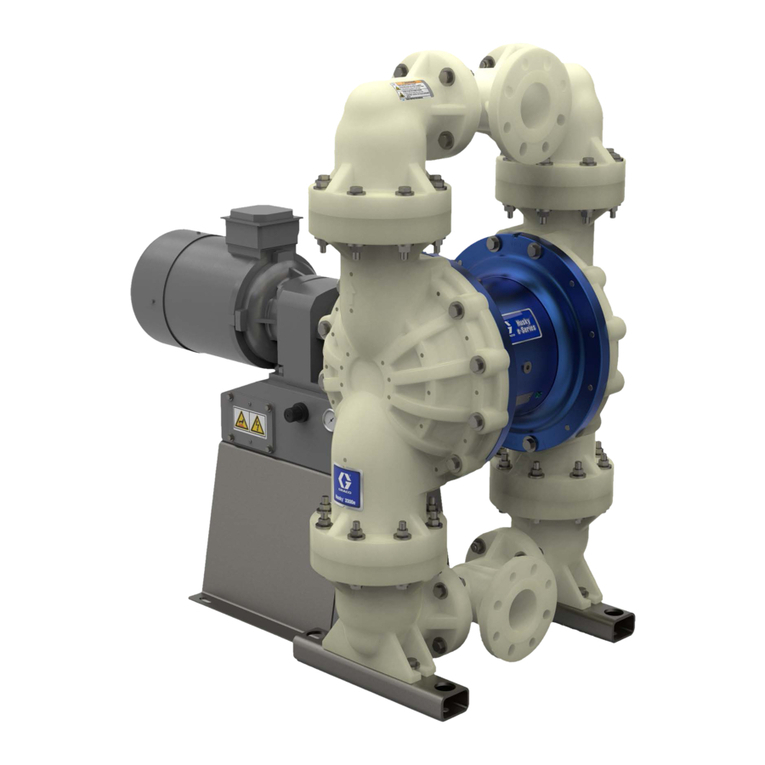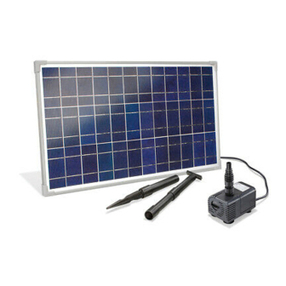
9
• Follow motor and coupling manufacturer’s lubrication
instructions.
• Recheck coupling alignment.
SHAFT AND BEARING REPLACEMENT (E-Series)
If shaft or bearing replacement is necessary, follow
these instructions. (Shut down the pump and
disconnect power supply to the pump before working
on pump.)
1. Install the front (impeller end) bearing (36) on
the shaft (38).
2. Slide the carrier retaining ring (106) onto the
shaft (38) over the coupling end.
3. Install the rear (coupling end) bearing (117) on
the shaft (38).
4. Install the retaining ring (108) onto the shaft (38).
Add shims (107) between the retaining ring (108)
and the rear bearing (117) if required to lock the
rear bearing (117) on to the shaft axially.
5. Install O-ring (109) into the O.D. groove of the
bearing carrier (110).
6. Slide the bearing carrier (110) with o-ring over the
rear bearing such the rear bearing slides into the
bearing carrier (110). Install the retaining ring (106)
in place inside bearing carrier.
7. Insert shaft assembly with bearings and carrier into
the housing (31).
SEAL INSTALLATION INSTRUCTION
Seal is precision made. Handle carefully. Do not scratch
seal face.
1. Remove old seal. Clean shaft and all seal cavity
surfaces thoroughly.
2. Coat carbon washer, inside surface of rubber boot,
and rubber o-ring with a clean oil lm.
3. Push stationary assembly into cavity, seating it
rmly and squarely with nger pressure only. DO
NOT use screwdriver or any tool which might
damage the stationary assembly.
4. Slide bellows assembly on shaft as far as possible,
pushing against rubber tail section only. Ease
bellows assembly into place. DO NOT DRIVE
WITH A HAMMER.
5. Install bellows spring with one end on ange of
metal seal ange. Some seal assemblies use a
tapered spring. On these, the smaller diameter ts
on metal seal ange.
6. Complete assembly of other pump parts.
A short “run-in” period may be necessary to provide a
tight seal joint.
CAUTION: Never run a seal dry for any length of time.
NOTE: Please make note that all “P” Series pumps are
equipped with shaft sleeve.
SHAFT SLEEVE INSTALLATION (2P, 3P, 4P ONLY)
Follow these instructions when applying loctite
between the shaft sleeve and shaft surface.
(a) Surface to be coated with loctite must be free
of dirt and grease. Wash with degreasing solvent if
necessary.
(b) Spray these surfaces with loctite primer type “T”.
DO NOT OVERSPRAY. The thinnest lm of primer
is best. Avoid skin contact or repeated breathing
of primer vapor. Allow three to four minutes for
primer to dry.
(c) Apply a coat (.005" or less thick) of loctite 271
(red) to both shaft and inside of shaft sleeve.
(d) Slide shaft sleeve over the shaft all the way against
shaft shoulder. Make sure the chamfer on the I.D.
of the shaft sleeve is towards the shaft shoulder
not towards the impeller. Allow 5-10 minutes to
cure if primer type “T” is used, or 10-15 minutes if
primer is not used to attain full strength of loctite.
NOTE:
1. An evenly applied coat of loctite on both surfaces
will prevent leakage under shaft sleeve.
2. To remove shaft sleeve heat sleeve surface to
300º-350ºF with heat gun and tap gently on sleeve
to remove.
CHECK VALVE REPLACEMENT
To remove suction check valve follow these steps:
(a) Disconnect suction piping from suction inlet (50).
(b) Remove complete assembly, which includes
suction inlet (50) and check valve assembly.
(c) Remove shoulder bolts (54) to remove check valve
keeper plate (53) and rubber check valve (51).
If any of the parts of the check valve assembly are
damaged i.e. suction inlet (50), check valve (51),
shoulder bolt (54) and keeper plate (53), replace.
Make sure the sealing surface on suction inlet (angled
surface) is not damaged.
NOTE: Latest design check valve uses shoulder bolt
(54) instead of stud, space tube, locking nut, and
washer.
Follow above procedure in reverse to reassemble the
pump.
NOTE: Make sure all gaskets, o-ring, rubber check
valve and seal assembly are in good condition before
reassemby. Replace as is necessary.
WINTER STORAGE
1. Wash off exterior of pump.
2. Flush suction line, discharge line, pump casing,
impeller and diffuser of all solids by pumping clear
liquid for a short time.
3. Drain pump casing, suction line and discharge
line.
4. If complete draining is impossible add small
amount of anti-freeze into the pump casing. Rotate
shaft for mixing.
5. If the bearings are oil lubricated drain the old oil
from bearing housing and rell housing cavity with
proper grade of oil. (Refer to Maintenance
section).
6. Seal off suction and discharge ports of pump
casing.
7. Store the units in dry clean area if possible.
8. Motor windings should be protected from
excessive moisture. Follow motor manufacturer’s
instructions.
9. Spray interior of pump casing with commercially
available anti-rust and anti-corrosion petroleum
aerosol.
10.Once a month rotate the pump shaft during
storage if possible.
